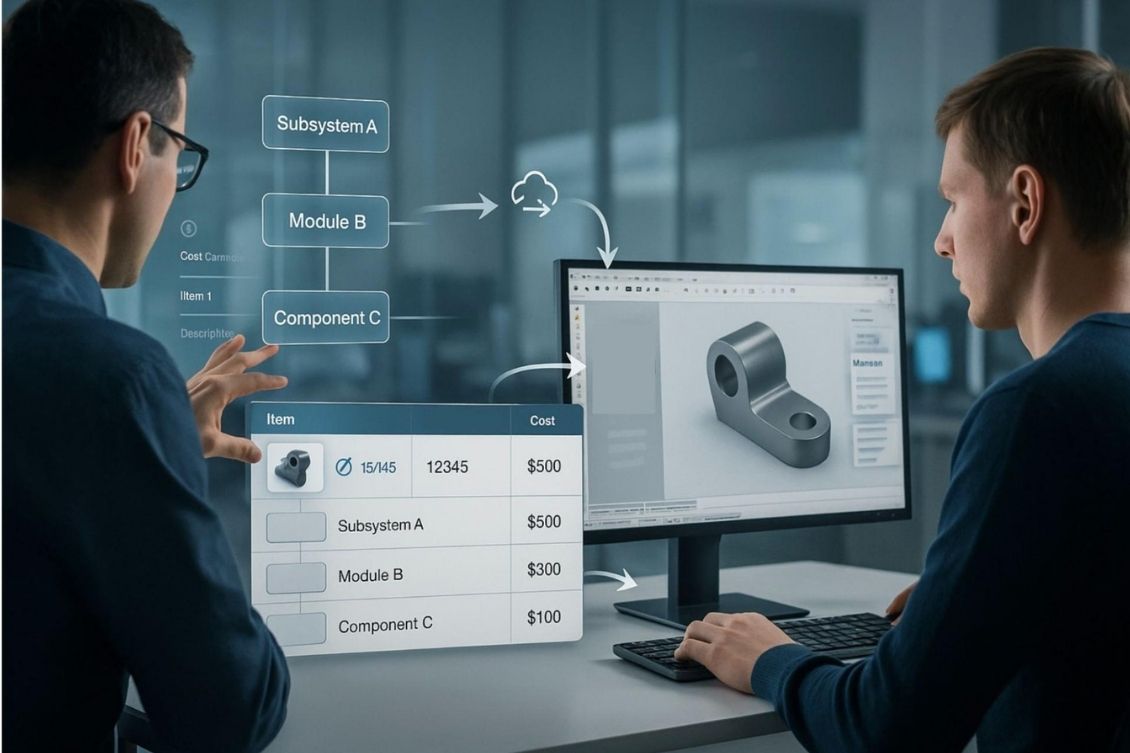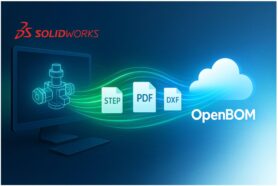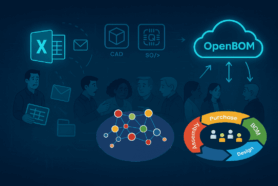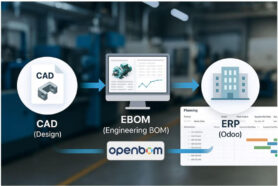
Products are becoming increasingly complex and teams are distributed across geographies. It brings up a question about how to improve the design process and to support better communication between engineers working on different systems, sub-systems, and components.
Traditional engineering practices often fall into one of two camps: top-down, where you start with a product structure and decompose it into parts; and bottom-up, where detailed design leads the way and the BOM is created afterward.
But how can we merge them together and provide a way to support both at the same time?
Let’s explore how OpenBOM enables a mixed-mode collaborative design approach, combining both top-down planning and bottom-up execution in a seamless workflow, fully integrated with your CAD tools.
Start with a Vision: The Top-Down Approach
Imagine you’re launching a new product. You have a concept, some high-level specs, and a need to estimate cost and materials before committing to detailed design. That’s where OpenBOM’s top-down capabilities come in.
Here’s how you begin:
1. Create Items: Start by defining high-level components and subsystems—items with descriptions, categories, cost placeholders, and other metadata.
2. Build a System BOM: Organize those items into a structured product BOM that reflects your architecture—even if the CAD models don’t exist yet.
3. Estimate Cost and Procurement Needs: Use OpenBOM’s real-time rollups and vendor integration to get early cost feedback and sourcing visibility.
This phase enables system engineers and project leads to collaborate on structure, cost, and product scope before CAD is even touched. It’s the strategic view that sets the foundation.
Realize the Design: The Bottom-Up Execution
Once you’ve validated your high-level structure, it’s time to move into the bottom-up process—designing the physical components in your preferred CAD tool (SolidWorks, Altium Designer, Autodesk Fusion, PTC Onshape, etc.).
Here’s where OpenBOM shines again:
4. Link Existing Items: OpenBOM keeps the top-down structure intact, meaning the CAD engineer doesn’t have to reinvent the wheel. They can automatically connect CAD models to the items that already exist in OpenBOM (thanks to intelligent CAD integrations provided by OpenBOM).
5. Design in CAD: As engineers create models, they can enrich the metadata with part numbers, revisions, materials, and more—directly from within the CAD system using OpenBOM’s native integrations.
6. Sync in Real-Time: OpenBOM’s sync engine ensures that any updates from CAD—geometry, quantities, file links, and properties—are automatically reflected in the existing BOM. You’re not just replacing data—you’re enriching it.
This is where collaboration becomes dynamic: engineers don’t overwrite what was done in the planning stage—they complete it.
VIDEO: Check a simple example of how it works
Please watch this video with a simple demo.
Why It Matters
Most engineering teams don’t work in pure top-down or bottom-up silos. Projects evolve, ideas change, and design is rarely linear. OpenBOM supports this reality by providing a flexible, cloud-native system that unites early planning and downstream execution.
You get:
✅ A living BOM that evolves from concept to design
✅ Real-time sync between CAD and BOM
✅ No duplication of efforts – top-down items become the foundation for bottom-up detail
✅ Better visibility and fewer errors across the product lifecycle
Conclusion:
Whether you’re starting with a product vision or designing from the ground up, OpenBOM supports both approaches—and more importantly, connects them.
This isn’t just a workflow improvement; it’s a mindset shift. Engineering teams can work the way they think—starting broad, refining as they go, and always staying connected to the full picture.
Plan top-down. Design bottom-up. Deliver faster. That’s the OpenBOM way. REGISTER FOR FREE and check how OpenBOM can help you.
Best, Oleg
Join our newsletter to receive a weekly portion of news, articles, and tips about OpenBOM and our community.










